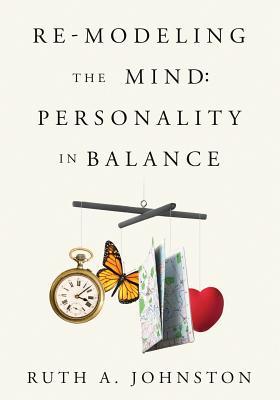Re-Modeling the Mind: Personality in Balance starts with a challenging proposition: what if human personality is best understood by looking first at nature and animals? We know that nature's systems are self-balancing, and we know that insects, animals, birds, and insects are born knowing things.
Like animals, we carry templates of safety and danger that are inborn---hard-wired---in a very rough outline. Unlike animals, our templates of safety and danger are primarily about how to stay safe from each other, since we are our own greatest predators. Our brains are also part of the natural world and some of its physical laws apply. Like a natural system, the brain seeks efficiency, which means the right balance between habit and chaos. From all this emerges the predictable patterns we call personality.
"Re-Modeling" means both creating a new model for how we think about personality, and using it to improve the way we manage our own personalities.
The book uses Carl Jung's framework for outlining how the mind takes in and organizes information, and it also uses the Myers-Briggs personality types that many readers are familiar with. However, while the types are recognizably the same, the new model presents different reasons for why they exist, what they mean, and how they work.
"Introversion" means being tied to innate animal-like templates of safety and danger, not preferring to be alone. This shift in meaning alters the way we see conscience, learning, and ability to change. And much more.
Conscience: is yours warm or cool? does it match those closest to you, or are you stuck in irreconcilable arguments where each of you is sure the other is utterly wrong?
Worldview: does your personality see life more like Film Noir or Hollywood Classic? Or more like an action thriller or science fiction? How does that alter the way you size up decisions and situations? What does it say about your attention span or tolerance for stimulation?
Balance: is your personality balanced among its four main functions, or is one of them carrying more of life's chores than it should? This could be why you're mentally and emotionally exhausted even when it looks like you're doing everything right. You may be able to make a few changes in your outer life that help rebalance your brain.
Temperament: when the personalities are put into a chart, which column do you thrive in? And even more importantly, how fast can you learn to spot which column perfect strangers---or those closest to you----fit into? And how can you tweak your responses to them for best results?
Dominance: in the chart, there are four rows that identify personal dominance. How much does it matter to you to have your thoughts and wishes come true? On how much of the world around you would you feel okay enforcing these wishes?
Marriage: the close partnership of marriage means fighting for conscience or dominance will leave wounds that can damage love. If you're already married, how can these ideas help you see the roots of some intractable conflicts? If you're free to make a marriage choice, how can you best plan so that, as you change and grow across a lifetime, you're most likely to still be close?
Re-Modeling the Mind addresses some of the hardest questions about who we are, why we do things, and why we can or can't change. It rewards close attention as few personality books can, since it is presenting a model of how we function. Make this model your own, and you'll start seeing questions and answers that no book could address.
